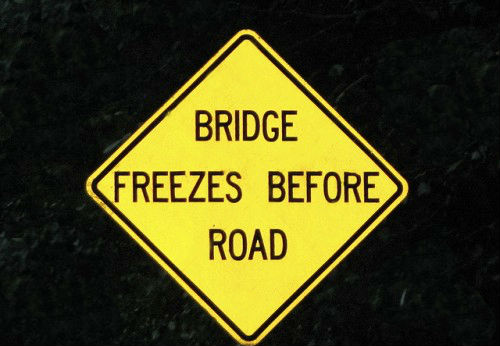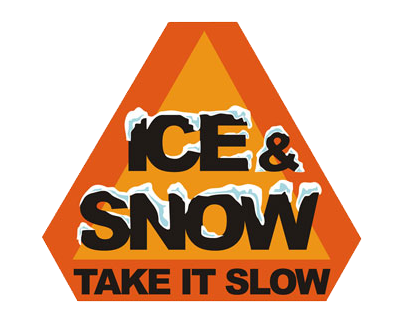Pro Tip: Bridges Freeze First
Special Stories
15 Jan 2018 5:21 PM
As winter pushes on and many locations across the U.S. see wintry weather it’s good to remember that bridges will freeze before adjacent road surfaces. That means you could go from traveling in wet road conditions to sliding out of control across a bridge without warning if you are not careful.
 The reason for bridges freezing first is really quite simple. Bridges are cooled from above and below. Adjacent roadways are cooled and lose heat from the one surface exposed to the freezing conditions. Bridges will cool to the freezing point quicker and if there is moisture on the surface that will freeze as well.
The reason for bridges freezing first is really quite simple. Bridges are cooled from above and below. Adjacent roadways are cooled and lose heat from the one surface exposed to the freezing conditions. Bridges will cool to the freezing point quicker and if there is moisture on the surface that will freeze as well.
 Drive with care this winter and to help with that here are a few more tips for driving in the snow.
Drive with care this winter and to help with that here are a few more tips for driving in the snow.
 Stay home. If you really don’t have to go out, don’t. Even if you can drive well in the snow, not everyone else can. Don’t tempt fate: If you don’t have somewhere you have to be, watch the snow from indoors.
Meteorologist Mike Morrison
Stay home. If you really don’t have to go out, don’t. Even if you can drive well in the snow, not everyone else can. Don’t tempt fate: If you don’t have somewhere you have to be, watch the snow from indoors.
Meteorologist Mike Morrison
 The reason for bridges freezing first is really quite simple. Bridges are cooled from above and below. Adjacent roadways are cooled and lose heat from the one surface exposed to the freezing conditions. Bridges will cool to the freezing point quicker and if there is moisture on the surface that will freeze as well.
The reason for bridges freezing first is really quite simple. Bridges are cooled from above and below. Adjacent roadways are cooled and lose heat from the one surface exposed to the freezing conditions. Bridges will cool to the freezing point quicker and if there is moisture on the surface that will freeze as well.
 Drive with care this winter and to help with that here are a few more tips for driving in the snow.
Drive with care this winter and to help with that here are a few more tips for driving in the snow.
- Accelerate and decelerate slowly. Applying the gas slowly to accelerate is the best method for re-gaining traction and avoiding skids. Don’t try to get moving in a hurry. And take time to slow down for a stoplight. Remember: It takes longer to slow down on icy roads.
- Drive slowly. Everything takes longer on snow-covered roads. Accelerating, stopping, turning – nothing happens as quickly as on dry pavement. Give yourself time to maneuver by driving slowly.
- The normal dry pavement following distance of three to four seconds should be increased to eight to ten seconds. This increased margin of safety will provide the longer distance needed if you have to stop.
- Know your brakes. Whether you have antilock brakes or not, the best way to stop is threshold braking. Keep the heel of your foot on the floor and use the ball of your foot to apply firm, steady pressure on the brake pedal.
- Don’t stop if you can avoid it. There’s a big difference in the amount of inertia it takes to start moving from a full stop versus how much it takes to get moving while still rolling. If you can slow down enough to keep rolling until a traffic light changes, do it.
- Don’t power up hills. Applying extra gas on snow-covered roads just starts your wheels spinning. Try to get a little inertia going before you reach the hill and let that inertia carry you to the top. As you reach the crest of the hill, reduce your speed and proceed down hill as slowly as possible.
- Don’t stop going up a hill. There’s nothing worse than trying to get moving up a hill on an icy road. Get some inertia going on a flat roadway before you take on the hill.
 Stay home. If you really don’t have to go out, don’t. Even if you can drive well in the snow, not everyone else can. Don’t tempt fate: If you don’t have somewhere you have to be, watch the snow from indoors.
Meteorologist Mike Morrison
Stay home. If you really don’t have to go out, don’t. Even if you can drive well in the snow, not everyone else can. Don’t tempt fate: If you don’t have somewhere you have to be, watch the snow from indoors.
Meteorologist Mike MorrisonAll Weather News
More